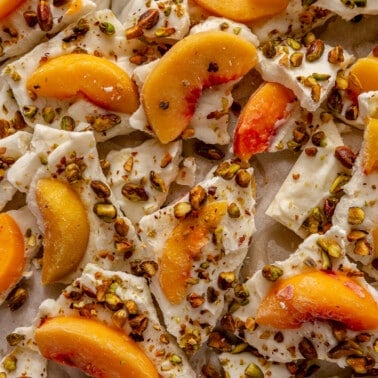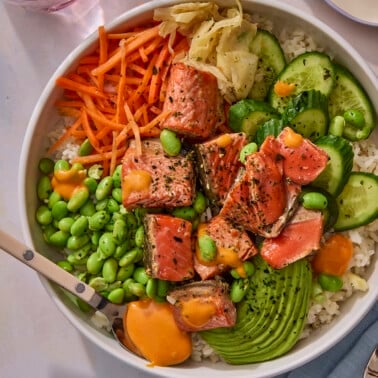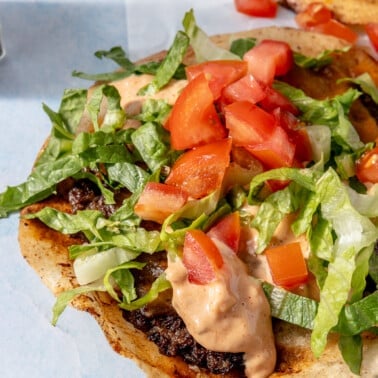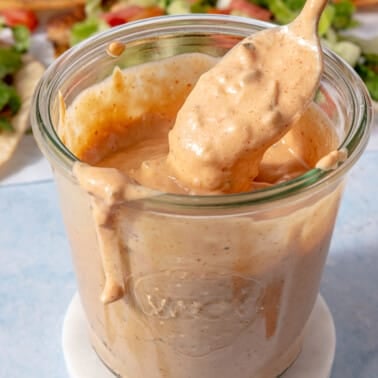Beautifully moist, buttery-soft and tender, this sous vide salmon recipe will give you perfectly cooked salmon every time.
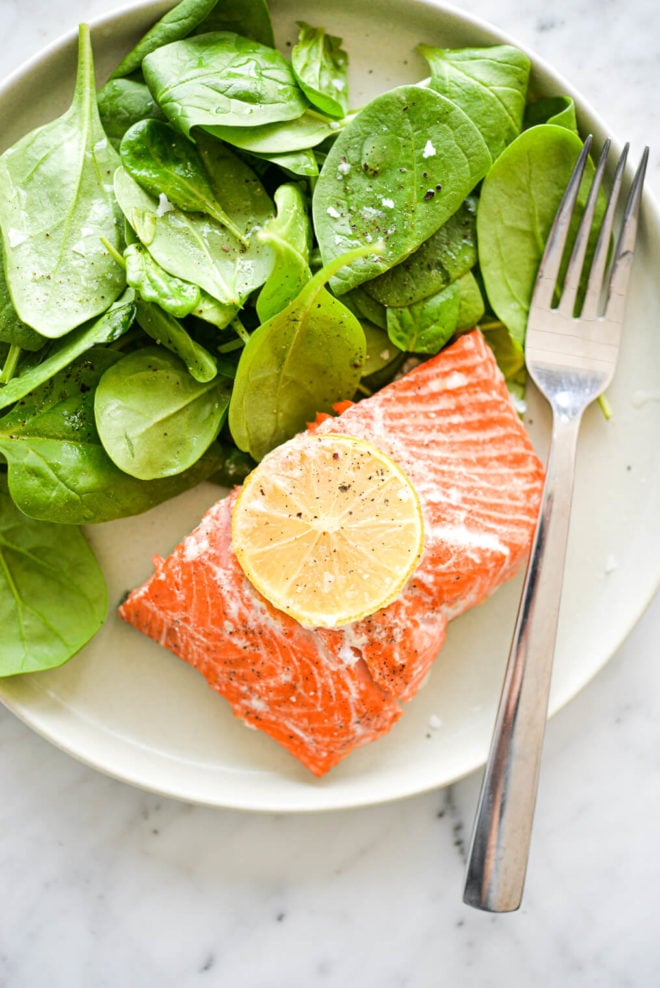
Sous Vide Salmon Recipe
Achieving a perfectly cooked piece of salmon can be hard…and expensive! But not anymore! Cooking salmon sous vide-style produces a beautifully cooked piece of fish every time and provides a great opportunity to impart different flavors into the fish. You just need a sous vide precision cooker, a pot or container large enough to hold the bag plus circulate the water, and food-safe bags (either vacuum-sealed or with as much air as possible removed).
What is Sous Vide?
The term “sous vide” is literally translated to “under vacuum” or “under pressure.” Sous vide is a method of cooking where you vacuum-seal the food (typically meat or fish) and immerse the bag in warm water. The sous vide kitchen gadget keeps the temperature of the water controlled using an immersion circulator, making this a safe cooking option.
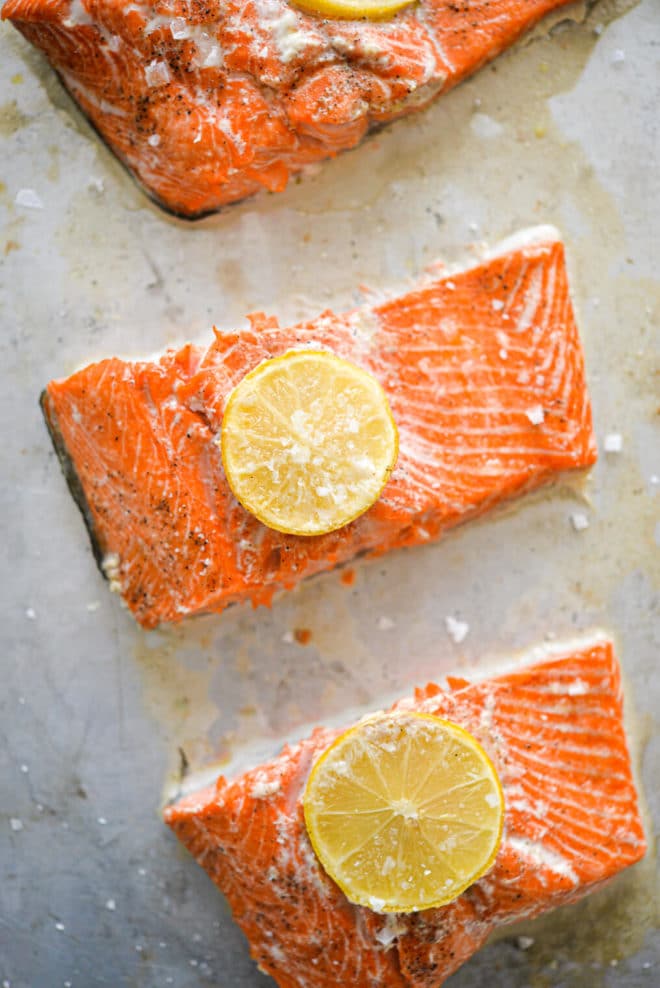
Why Sous Vide Salmon?
Since the salmon never gets warmer than the temperature of the water, the cooking temperature remains extremely controlled. This decreases the likelihood that you will overcook your fish. The cooking time is completely hands-off, so you can set the temperature, add your salmon, set a timer, and go about your day. The result is a really soft, tender, flaky fish and more time for you!
Sous Vide Salmon Ingredients
The ingredients for this sous vide salmon are incredibly simple, but definitely not short on flavor! Here’s what you’ll need:

- Salmon – to start, you’ll need a 12 oz salmon filet (cut into 4-ounce filets, about an inch in thickness).
- Olive Oil – 1 tablespoon of olive oil helps bring out the natural flavors of the salmon and infuse the lemon into the fish.
- Lemon – ½ of a sliced lemon adds bright pops of citrus-infused flavor to the salmon.
- Salt – a ½ teaspoon of salt and…
- Pepper – a ¼ teaspoon of pepper simply season the salmon.
Ingredient Modifications
The flavors in this sous vide salmon recipe are classic and clean. Here are some ways you can play with the flavor profile of the dish:
- Add herbs – to the sous vide bag, add fresh herbs for extra earthy flavor. There are so many herbs that pair beautifully with salmon, so you can really have fun with it–dill, parsley, sage, basil, rosemary, tarragon, thyme, and fennel are several that come to mind.
- Add garlic cloves – you can’t go wrong with adding garlic to any recipe (in my book). Try adding 2 cloves of thinly sliced garlic.
- Make it sweet and spicy – use a ¼ cup of maple syrup and a sprinkle of cayenne pepper for a slightly sweet and spicy combination.
Supplies Needed to make this Recipe
The equipment is actually really straightforward to sous vide from home! All you need to make it happen is a sous vide machine itself (this is the part you plug in that sits in the water and controls the temperature), a bag to cook your food in, and a bucket or pot of water. I’ve used a handful of the top sous vides on the market and the one below is my absolute favorite:
- The Anova Sous Vide is the most highly-rated sous vide for a very good reason. The sous vide itself is a (roughly) foot-long gadget that controls the temperature of the water and keeps it whirling in your pot. It’s slick, easy to use, compact, and will work with any container you already have on hand. I really love mine.
As for the other pieces of equipment, there are some options. First, you will need some kind of waterproof bag to cook your food in. You’ll want to be able to remove all the air from this bag so that the food and whatever flavors or marinades are in there infuse with each other without any air interfering (which could cause uneven cooking). Here are some bag options:
- SousBear bag kit: these bags are neat in that they come with a hand pump you can use to remove the air in addition to little clips you’d use to secure your bag to the side wall of the container. This system works as long as the vacuum seal hole stays above the water line. A pro of this system is that it doesn’t require a large vacuum sealer while a con is that you have to secure the bag to the side wall (vs. just plopping the bag in the water).
- Anova Precision Vacuum Sealer: this is the vacuum sealer featured in the photos above! I love it, but I’d definitely consider it a luxury kitchen gadget. It’s very easy to use, it both removes the air and adds a quick seal to a bag, and stores easily in a drawer.
- Anova Vacuum Sealer Bags: I do love these pre-cut vacuum sealer bags from Anova. They fit perfectly in with the vacuum sealer (for obvious reasons), don’t leak, and are pretty minimal. They also freeze really well if you’re ever wanting to stock your freezer with sous vide goodies.
- Plastic ziplock bags: yes, you can sous vide in your ordinary freezer bag! Do your best to remove the air from it (you know, the “squish and roll” method), and pop it right in.
- Silicone ziplock bags: even though most sous vide bags are BPA-free, you may still prefer a silicone option. These will work in just about any sous vide setup! My favorite brand is the Stasher bag because they’re incredibly versatile (you can pop popcorn in them, use them to carry snacks, and even sous vide a chicken breast).
- A bucket: this Rubbermaid 12-quart bucket is the exact bucket I have, but please know you do NOT need one. You can use a large pot and it will work just as well. I do love this bucket and find myself using it to brine larger proteins, but again, it’s a luxury buy (in my opinion).
How to Sous Vide Salmon
The whole process is just a few simple steps, and most of the time is hands-off! To make your sous vide salmon, you’ll:
- Season and vacuum seal – to start, season your salmon with salt and pepper, drizzle with olive oil, top with lemon slices, then place in the vacuum-sealed bag. Be careful not to get any olive oil on the top 2-inches of the bag (if you’re using a vacuum sealer) because it could impact the sealing of the bag. If you get oil on the bag, use a food-safe cleaner to wipe the top of the bag and remove the oil.
- Sous vide – cook the salmon at 120℉ for 30 minutes (increase cooking time to 45-60 minutes if using thicker filets).
- Broil – broil the salmon filets for 2 minutes in the oven on high to crisp the skin and add a little texture to the outer layer of fish (while keeping the interior tender and moist).
- Serve and enjoy!
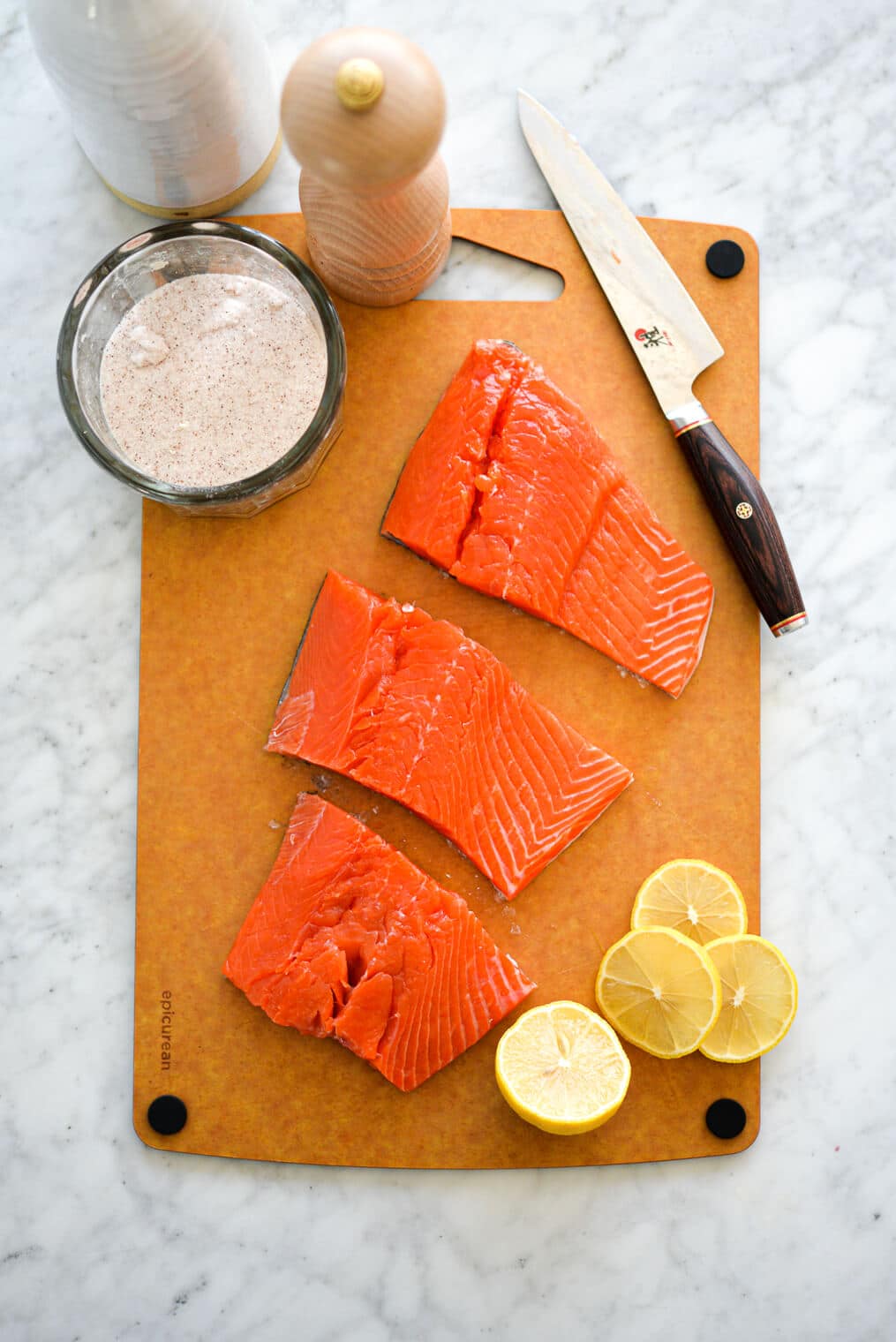
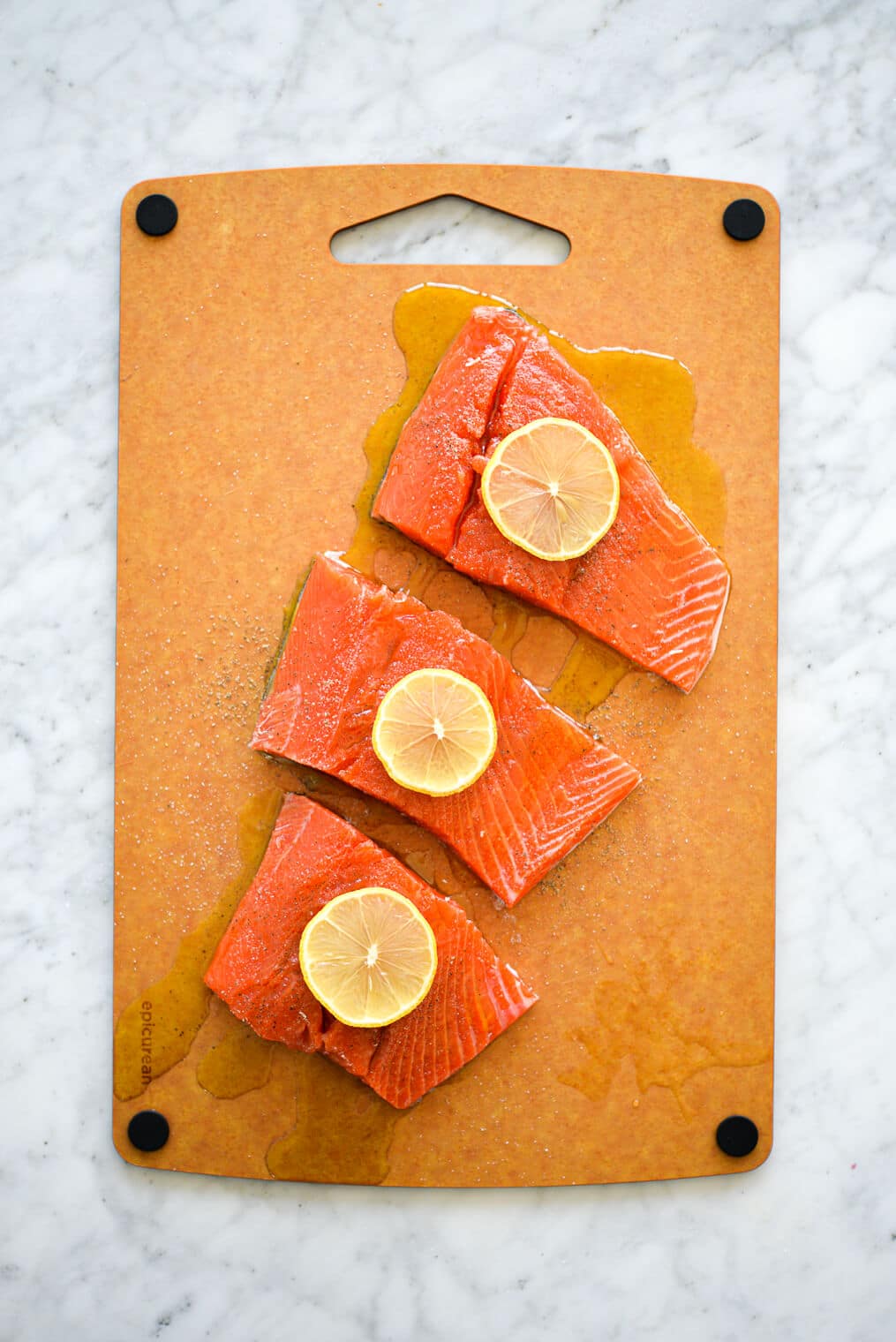
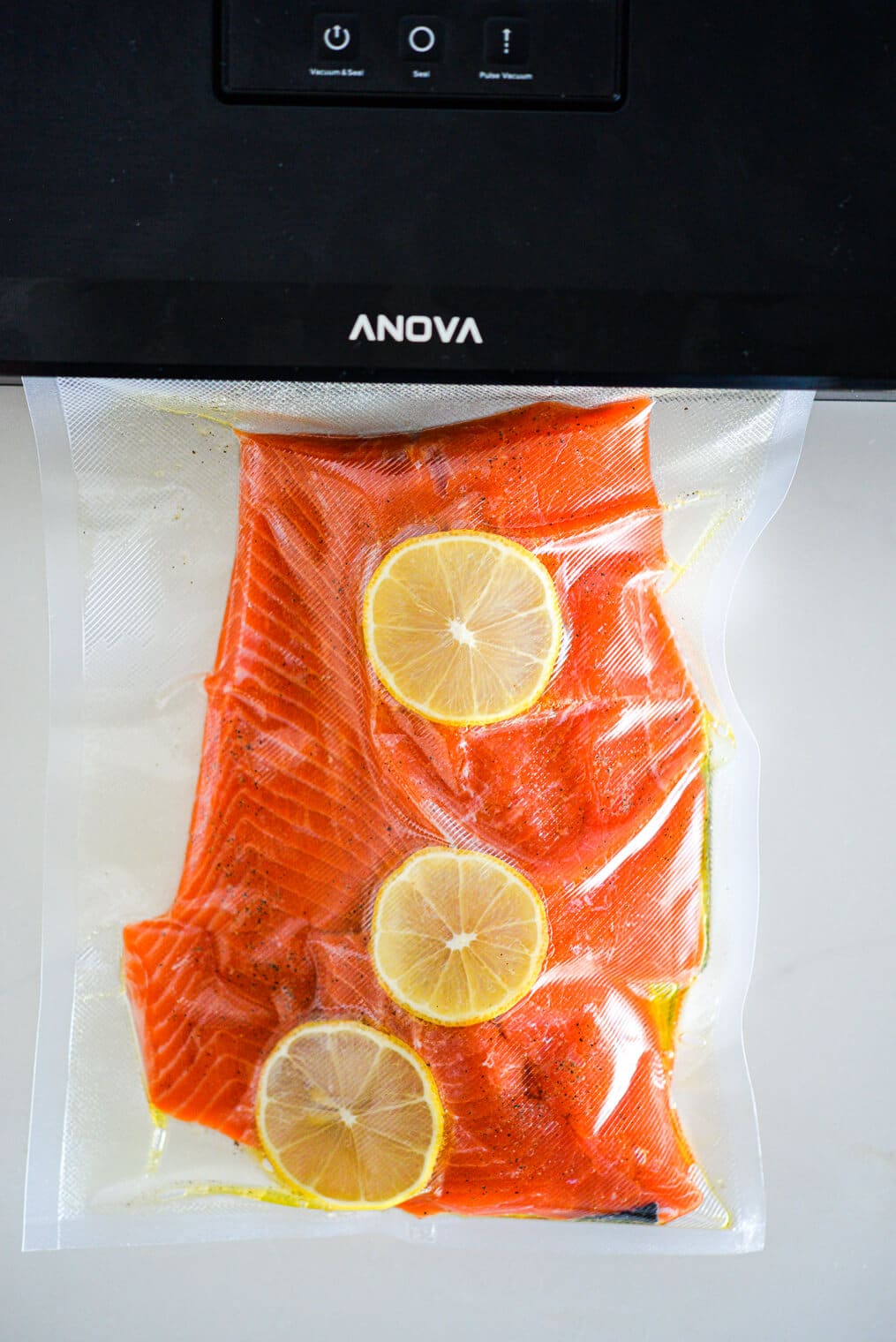
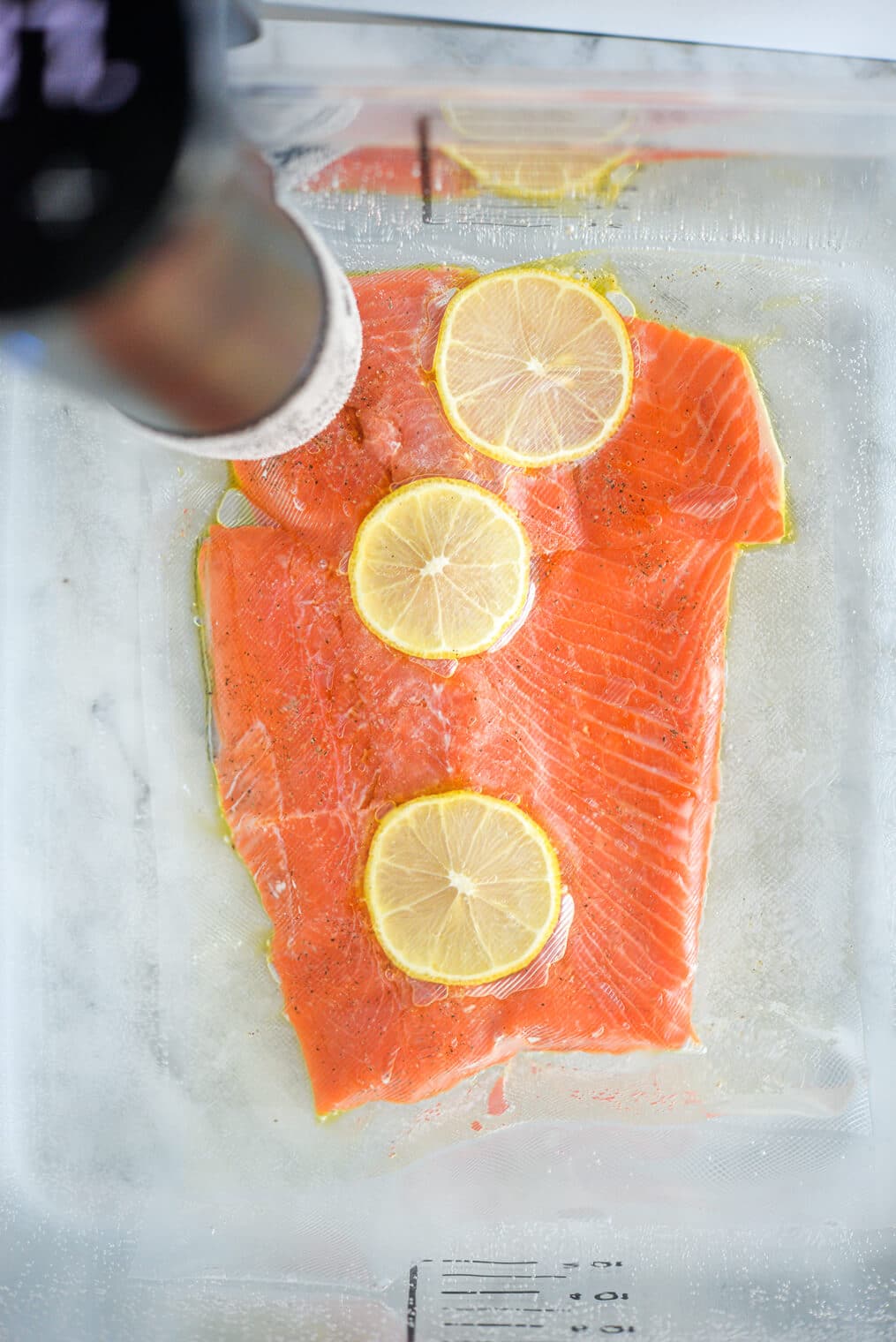

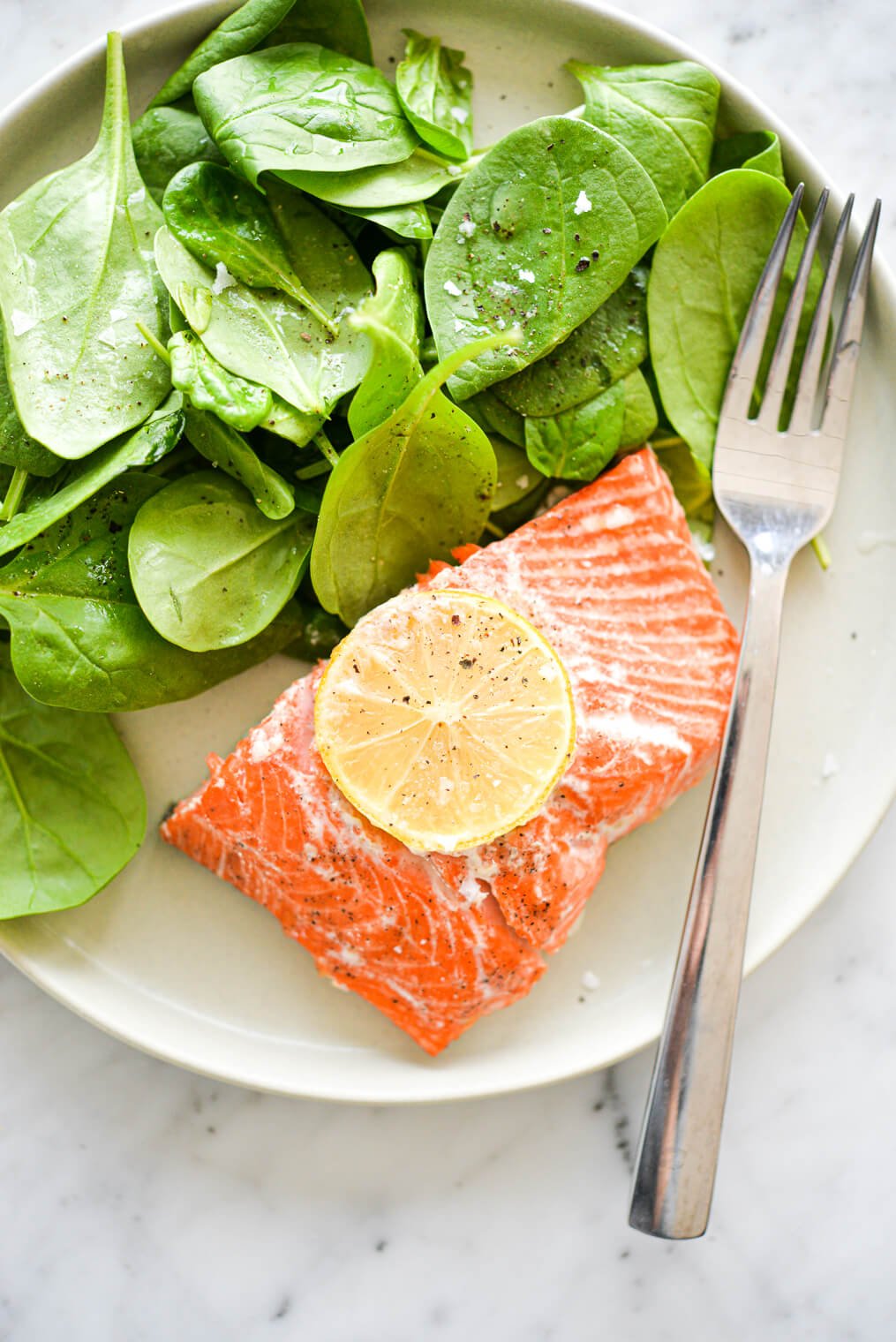
Do you season the salmon before cooking it sous vide?
Yes! This recipe calls for a simple salt and pepper seasoning in addition to the olive oil and fresh lemon slices that flavor the salmon before heading into the bag. Adding the seasoning prior to cooking sous vide allows for the salmon to be infused with the flavors while cooking in the vacuum-sealed bag.
Can you sous vide in silicone bags?
Yes! While most food-grade, plastic bags are safe for sous vide cooking (especially since the water is kept at a low temperature), you can definitely cook in a reusable silicone bag if you prefer.
Can you sous vide frozen salmon?
While this recipe calls for fresh salmon, you can absolutely use frozen salmon if that is what you have on hand. When cooking from frozen, you’ll increase the cooking time to about 70 minutes, depending on the size and thickness of the filet. If your salmon is already in a vacuum-sealed bag, you can even cook it straight in that bag (then add seasoning before finishing in the oven).
How long to sous vide salmon?
For a one-inch filet, you’ll want to sous vide your salmon for about 30 minutes at a temperature of 120℉.
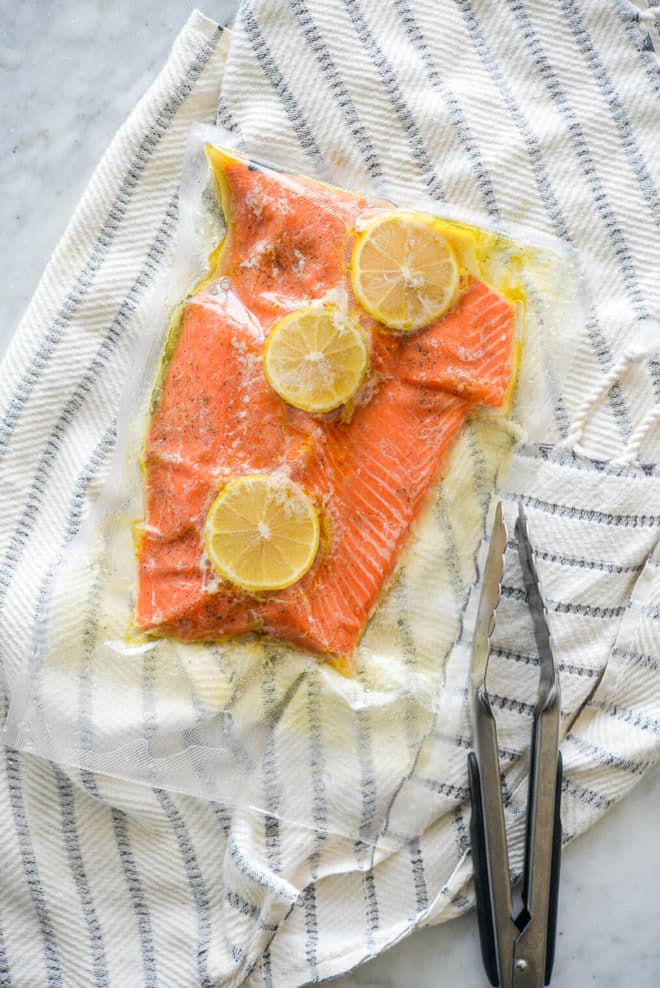
What is the required sous vide salmon temp?
Depending on the doneness and texture you are looking to achieve when sous viding your salmon, you’ll adjust the water temperature you cook the fish at and cook according to this guide.
- Like firm sashimi – 105℉
- Soft and buttery – 110℉
- Translucent and starting to flake – 115℉
- Very moist, tender, and flaky – 120℉
- Firm, moist, and flaky – 130℉
Can you overcook salmon sous vide?
It is difficult to overcook your salmon when cooking sous vide because the temperature is so controlled. However, fish that stay in the water bath too long can become soft and mushy.
What goes with sous vide salmon?
My favorite way to eat salmon is alongside a simple arugula salad. It’s also really tasty on top of Mexican corn salad, lemony garlic parmesan pasta, or paired with whole roasted brussels sprouts.

How do you store sous vide salmon?
To store your sous vide salmon, place it in an airtight container in the fridge.
How long will sous vide salmon last in the fridge?
Sous vide salmon is best consumed within 3 days of cooking.
Reheating Sous Vide Salmon
To reheat your sous vide salmon, you have some options:
- Enjoy it cold in a salad!
- Microwave your salmon filet for about 1 to 1.5 minutes on high.
- Pan-sear for 3-4 minutes on each side (ideally, in a bit of olive oil) until it’s warmed through.
- Put it on a baking sheet and bake at 350°F for 10 minutes.
- Pop it in the air fryer at 350°F for 3-5 minutes.
Salmon Sous Vide Recipe
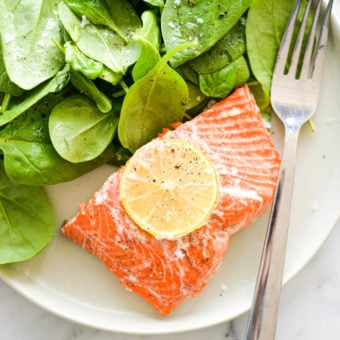
Ingredients
- 12 oz salmon filet cut into 4-ounce filets, about an inch in thickness
- 1 tablespoon olive oil
- ½ lemon thinly sliced
- ½ teaspoon salt
- ¼ teaspoon pepper
Instructions
- Season your salmon with salt and pepper, drizzle with olive oil, top with lemon slices, then place in the vacuum sealed bag. Be careful not to get any olive oil on the top 2-inches of the bag (if you’re using a vacuum sealer) because it could impact the sealing of the bag. If you get oil on the bag, use a food-safe cleaner to wipe the top of the bag and remove the oil.
- Cook the salmon at 120℉ for 30 minutes (increase cooking time to 45-60 minutes if using thicker filets).
- Broil the salmon filets for 2 minutes in the oven on high to crisp the skin and add a little texture to the outer layer of fish (while keeping the interior tender and moist).
- Serve and enjoy!
Recipe Notes
- Like firm sashimi – 105℉
- Soft and buttery – 110℉
- Translucent and starting to flake – 115℉
- Very moist, tender, and flaky – 120℉
- Firm, moist, and flaky – 130℉
